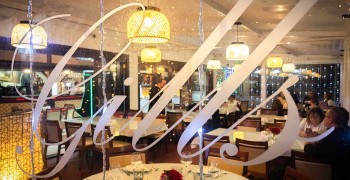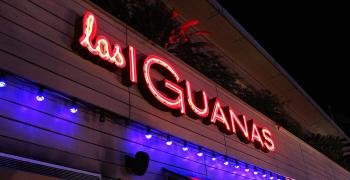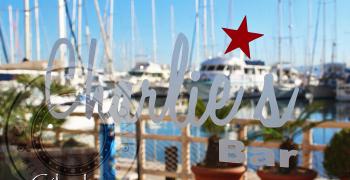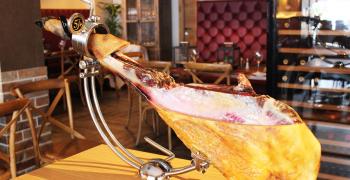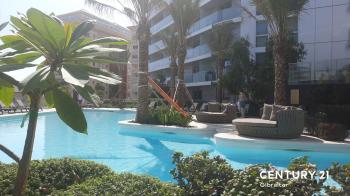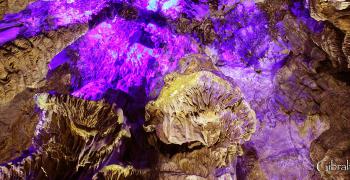Of the three attractions of Europa Point, the one which is most often visited and most frequently commented on, in fact one of the most well known of all the attractions of Gibraltar, is the Trinity Lighthouse, or the Lighthouse at Europa Point. It boasts itself proud at the most southern point of Gibraltar. Its amazingly unique situation, splitting the Atlantic Ocean and Mediterranean Sea, serves as a beacon to all passing sea vessels, traveling along the Strait.
Nice shot of the Gibraltar lighthouse at night
Interestingly, the lighthouse falls under an Act of Parliament of 1938, making Trinity House its authority. It is the only building operated by Trinity House that is located outside of England. It’s actually for this reason that the lighthouse at Europa point is often also referred to as the Trinity Lighthouse. The site of the lighthouse is still maintained and managed by the Government of Gibraltar, via telephone communication with the Gibraltar Port Office.
The construction of the Lighthouse at Europa Point was begun in 1838, by the Governor Alexander Woodford, who with his own hand laid the foundation for the lighthouse, setting the first stone of what would be the Lighthouse of Europa Point into place. There was a brief ceremony there, to commemorate it, which was covered by the local newspaper of Gibraltar, but the actual opening of the lighthouse didn’t take place for about three more years, when it opened in August of 1841. The opening of the Trinity Lighthouse at Europa Point was quite a spectacle, drawing in more than 2000 people from the area who came to watch its first emission of light out over the waterways.
This initial static light on exhibition in 1841 was produced by no more than a single wick oil lamp, reinforced by a dioptric rigid lens and catoptric mirrors. Even so, the lighthouse was a welcome addition to Gibraltar, and to the sailors both local and from a distance.
Interesting Fact
Prior to that time, the only light in the area that could possibly be used to navigate came to the sailors from the chapel that was known as our Lady of Europa. Grateful sailors left supplies of oil at Our Lady of Europa so that the lights could continue burning, in the towers as well as the windows, offering them a beacon of sorts to navigate by, making the Lady of Europa in actuality the first Lighthouse at Europa Point.
The Rock of Gibraltar was well known for the difficulties that could present themselves when navigating Gibraltar Bay, and any means of lighting the path was warmly welcomed.
Trinity Lighthouse on top of its rock face at Europa Point in Gibraltar.
One of these such difficulties, was a treacherous group of jagged rocks located on the western side of the entryway to Gibraltar Bay, called the Pearl Rock. In 1864 a Chance Brothers four wick burner along with a modernized lens were installed to cater for this danger. It was again improved on in 1875 replacing the original burner with a mineral burner.
The opening of the more proper lighthouse, designed to offer better and more safe navigation of the waters, made it far easier for the sailors to navigate what could be a treacherous stretch of waterway. It provided a light that was so much brighter and far higher raised than that of the chapel previously, so it did of course replace that first beacon.
From its opening in 1841, until about 1894, the lighthouse at Europa Point was deemed sufficient, but in 1894, improvements were made to the lighthouse that increased the power of the lighthouse and its ability to assist sailors in their navigation, changing out the single wicking and mirrors, to a Douglas burner that included eight wicks, as well as no longer being static, but now oscillating. The much improved lantern now produced roughly 35,000 candelas. At the same time a fog horn was installed, that would provide the ships with two short harsh blasts, in five minute cycles.
A tri incandescent mantle burner, brought a brand new source of light in 1905, which so too was replaced in 1923 by the single mantle Hood petroleum vapour burner. Between 1954 and 1956, the Europa Point Lighthouse again had some positive changes to its lighting and its surface, with the installation of the more modern methods of lighting.
Only showing the top section of the lighthouse at Europa Point.
With these additions, the lighthouse at Europa Point became more electrical in nature, and additionally the advances permitted full revolutions of its lens, and had far more power and visibility than the lighthouse could previously manage. In addition to the previous light warning sailors of the treacherous Pearl Rock, a secondary light was now placed just below the main lens providing a static red light over this dangerous area. To take this new additional light onboard, as well as its apparatus, the height of the tower had to be raised by six feet.
In February of 1994, The Europa Point Lighthouse became fully automated. The fog horn signal was removed and a mono directional five hundred hertz emitting electrical system installed in its place. In 2016 the rotating optic was uninstalled and two LED lights, one above the other, were put up in its place. These two lights, the main light and a backup standby light, remain in place to date, both fulfilling the navigational shipping qualifications.
Some other improvements have also been introduced, such as elevated battery capacity in case of a power failure, lightning protection, and an overall restoration of all electrical systems. For those who are interested, the old historical optic can be found on display at the University of Gibraltar, a very close five minute walk from the lighthouse.
The Lighthouse at Europa Point stands about 49 metres above the sea, and the light that it emits can reportedly be seen more than twenty miles, or 27 Kilometers away from its origin.
The Trinity Lighthouse began as a way to save lives and property, and to safeguard the travelers of the area. It has offered a means for seafarers to navigate safely for more than a hundred years, and continues to do so, yet it has evolved also to be one of the main tourist attractions of Gibraltar. While you’re in Gibraltar, make sure that you find your way to Europa Point and take a look at the Trinity Lighthouse.















